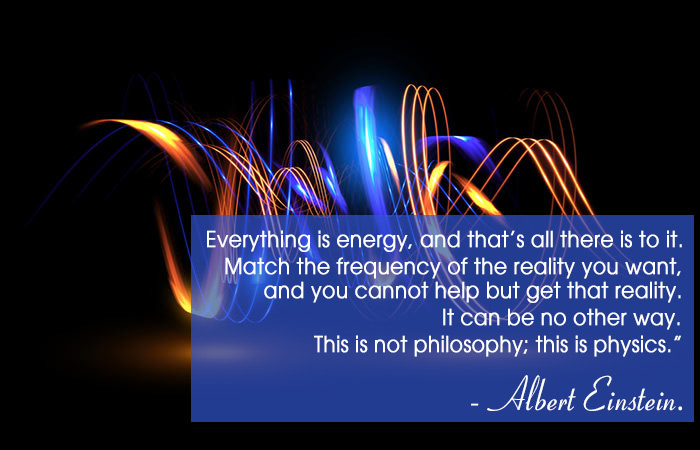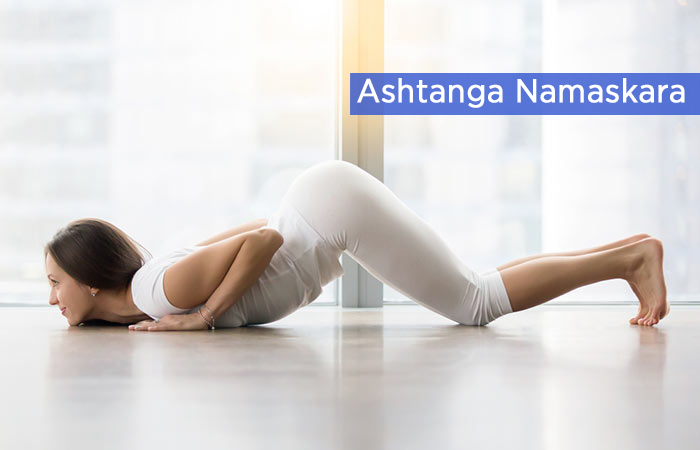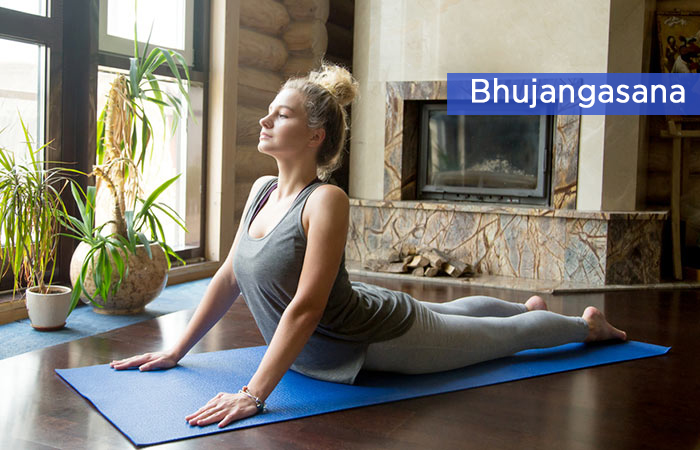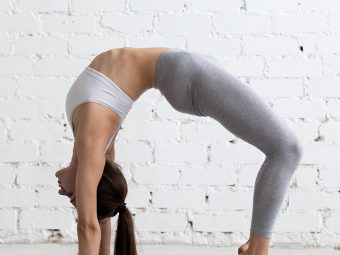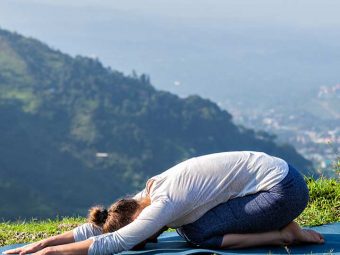How To Practice The Moon Salutation Sequence In Yoga (2024)
A step-by-step guide to help you master the poses of moon salutation and enjoy its benefits.

Image: StyleCraze Design Team
The Sun Salutation (Surya Namaskara) has a less popular but just as effective sister called the Moon Salutation (Chandra Namaskara). While the former is energizing, the latter is relaxing. As the name suggests, the Moon Salutation is performed in the soothing rays of the moonlight.
After a long, stressful day at work, the best thing you can gift to your body and mind is a peaceful session of the Moon Salutation. If you are familiar with Surya Namaskara, you already know how to go about this other salutation. But, there is a slight difference that you need to consider. What is it? In this article, we will discuss how both these salutations differ from each other and the sequence of Moon Salutation. So, keep scrolling to get started right away!
Before we get into the details of the Moon Salutation, let’s compare it to its more famous sister practice – the Sun Salutation or Surya Namaskara.
In This Article
Chandra Namaskar Vs Surya Namaskar
The difference between Chandra Namaskar and Surya Namaskar is similar to the difference between yin and yang, feminine and masculine. The Moon Salutation is relaxing whereas the Sun Salutation is energizing.
The Sun Salutation is about heat, light, and activity whereas the Moon Salutation is cooling, receptive, and meditative. Suryanamaskar is practiced in the morning when the sun rises and Chandra Namaskara in the evening when the moon is visible.
During the Sun Salutation practice, the movements are swift, that is, you must move from one pose to another quickly, while in the Moon Salutation, the poses are done slowly. Surya Namaskar is older than the Chandra Namaskar.
The Moon Salutation came into practice in the late 20th century. Chandra Namaskar is performed fewer times than Suryanamaskar. In Moon Salutation, Ardha Chandrasana is practiced after Ashwa Sanchalanasana whereas in the Sun Salutation, it is not performed.
The 12 steps of the Surya Namaskara refer to the 12 zodiac signs whereas the 14 poses of the Chandra Namaskara represent the 14 lunar phases.
Now, let’s learn how to practice the Moon Salutation.
The Moon Salutation Sequence
Following is the traditional sequence of the Moon Salutation.
- Pranamasana
- Hasta Uttanasana
- Uttanasana
- Ashwa Sanchalanasana
- Ardha Chandrasana
- Parvatasana
- Ashtanga Namaskara
- Bhujangasana
- Parvatasana
- AshwaSanchalanasana
- Ardha Chandrasana
- Uttanasana
- Hasta Uttanasana
- Pranamasana
1. Pranamasana
How To Do: Stand straight. Keep your feet together and neck straight. Gaze forward. Bring your palms to the center of your chest and press them together to form the prayer mudra. Relax your body.
Tip: Keep hip-width distance between your feet if the thighs are rubbing against each other. It will ease your lower backache.
2. Hasta Uttanasana
How To Do: Inhale and raise your hands over your head, maintaining shoulder-width distance between them. Keep your arms straight. Bend backward, taking the arms along.
Tip: Keep your hands straight above the head when bending backward if bending it is not convenient.
3. Uttanasana
How To Do: Exhale and bend forward at the hip. Your torso should fall front, with your head touching the region just below the knee and your palms placed on the ground on either side of your feet.
Tip: If you have back issues, bend your knees for your palms to touch the floor and place your palms on your ankles if you are finding it difficult to put them on the ground.
4. Ashwa Sanchalanasana
How To Do: Inhale and lunge forward on your left knee and stretch your right leg back as far as possible. Keep your toes tucked under. Bend backward and look upwards. Balance the pose with your arms by gripping the ground with your fingers.
Tip: Straighten your right knee such that it is at a 90-degree angle with the ground.
5. Ardha Chandrasana
How To Do: Inhale and stretch your arms with your hands above your head. Arch backward, taking the arms along. Raise your chin and look upwards.
Tip: Straighten your right knee such that it is at a 90-degree angle with the ground.
6. Parvatasana
How To Do: Exhale and bring your arms down to the floor. Take your left leg back towards your right leg. Lift your body upwards at the hip. Straighten your legs and back. Keep your feet together and your palms pressed against the ground. Push your torso towards your ankles. Take a few deep breaths in this pose.
Tip: Bend your knees a bit if the pose is straining.
7. Ashtanga Namaskara
How To Do: Exhale and come onto your knees. Lower your knees, chest, and chin to the floor. Keep your abdomen and hips raised. Place your palms on either side of the chest.
Tip: Lower the knees before the chin and the chest.
8. Bhujangasana
How To Do: Inhale and bend your feet backward. Keep the palms intact. Lift your chest, slide it forward, and raise it while bending backward. Elongate your arms, square your shoulders and look upwards. Keep your hips and thighs on the floor.
Tip: Do not completely straighten your arms. Squeeze your buttocks and thighs to prevent lower backache.
9. Parvatasana
Get back to the Parvatasana position by lifting the hips and getting your feet onto the ground. Exhale when you raise your hips. Take a few breaths here.
 Trivia
TriviaParvatasana stems from the Sanskrit words ‘parvat’ and ‘asana.’ While the former means ‘mountain,’ the latter stands for ‘position.’
10. Ashwa Sanchalanasana

Inhale and get into the Ashwa Sanchalanasana position (Same as 4).
11. Ardha Chandrasana
Raise your hands and stretch backward to get into the Ardha Chandrasana position (Same as 5).
12. Uttanasana
Stand up and bend forward to assume the Uttanasana (Same as 3).
 Did You Know?
Did You Know?13. Hasta Uttanasana
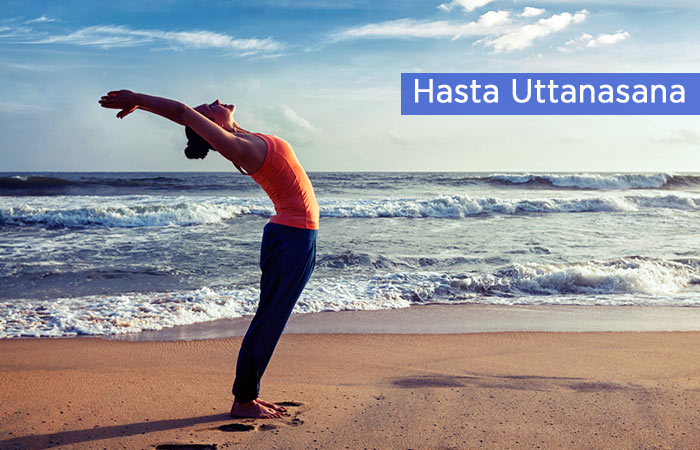
Raise your torso and bend backward to come to the Hasta Padasana position (Same as 2).
14. Pranamasana
Straighten up and form the Pranamasana (Same as 1).
Now, that we know how to practice the Moon Salutation, let’s learn about its benefits.
Benefits Of Chandra Namaskar
- Chandra Namaskar helps you calm down.
- It is soothing for those who feel stressed or overexcited.
- The sequence helps channelize your creative energies.
- The Moon Salutation strengthens and stretches your muscles.
- It balances your energy, keeping you away from exhaustion.
- The sequence is good for blood circulation and digestion.
- Chandra Namaskar improves your flexibility.
- It improves your confidence and reduces anger.
Moon salutation can improve your health and well-being when done properly. So,if you are doing it for the first time, be mindful of the common mistakes mentioned in the following section.
Moon Salutation For Beginners – Tips To Remember
- Avoid exerting excess force and try to feel at ease with the poses.
- Maintain the correct alignment in each pose to prevent strain.
- Learn when to inhale and exhale when changing the pose.
- Prioritize relaxation in Savasana at the end.
- Stay mindful and maintain focus.
- Warm up before starting the sequence.
- Be consistent to experience the health benefits.
- Avoid doing it if you have a back injury or feel discomfort during a pose.
Most importantly, seek expert guidance to avoid any injury and learn the right way of practicing chandra namaskara.
Infographic: Steps To Perform The Moon Salutation Sequence
Performing the Chandra Namaskar or Moon Salutation in the evening has its benefits. After a long day at work, this may help stretch stiff muscles and relax your mind and body. It is performed when the moon is visible in the evening sky and is very easy to do. Check out the infographic below for an easy step-by-step guide to perform the Moon Salutation.

Illustration: StyleCraze Design Team
The Moon Salutation comprises 14 poses representing as many lunar phases. It has a relaxing and soothing effect on the body and is performed in the relaxing rays of the Moon. The practice can be accompanied with meditation for a further calming experience. It may help promote mindfulness and provides extreme relaxation when performed daily. The sequence starts and ends with Pranamasana with fewer reps performed than the Sun Salutations. Moreover, these asanas are performed slowly and in a relaxed way, unlike Surya Namaskara. Practicing the Moon Salutation every day is said to calm the body, create harmony between body and mind, reduce stress, strengthen muscles, improve blood circulation, enhance digestion, etc. Hence, try giving a shot at this yoga technique and welcome change in your life.
Frequently Asked Questions
Does the Moon Salutation work better for women?
Chandra Namaskar honors the feminine energy in each one of us.
Can I practice Chandra Namaskar every day?
Yes, the Moon Salutation is a great way to unwind at the end of the day.
Is moon salutation good for sleep?
Yes, the relaxing nature of the poses calms and prepares the body for a deep and restful night of sleep
How many times can we do Chandra Namaskar?
The sun salutation is a sequence of 12 rounds whereas Chandra Namaskar is typically performed only 4-5 times at once.
Does the moon salutation help with weight loss?
Anecdotal evidence suggests that the moon salutation may help you lose weight while also improving your heart health and quality of life.
Can you do Chandra Namaskar after eating?
Chandra Namaskar should only be practiced on an empty stomach like all yoga poses. You should wait at least three to four hours after your meal before practicing it.
Key Takeaways
- The Moon Salutation (Chandra Namaskar) is a calming yoga practice, aimed at relaxing the body.
- The traditional sequence involves 14 steps, starting off with Pranamasana.
- The second step is Hasta Uttanasana, which allows you to bend backwards, thereby stretching and relaxing the backbone.
- The overall practice aids in strengthening the muscles, increasing blood circulation, and balancing energy.
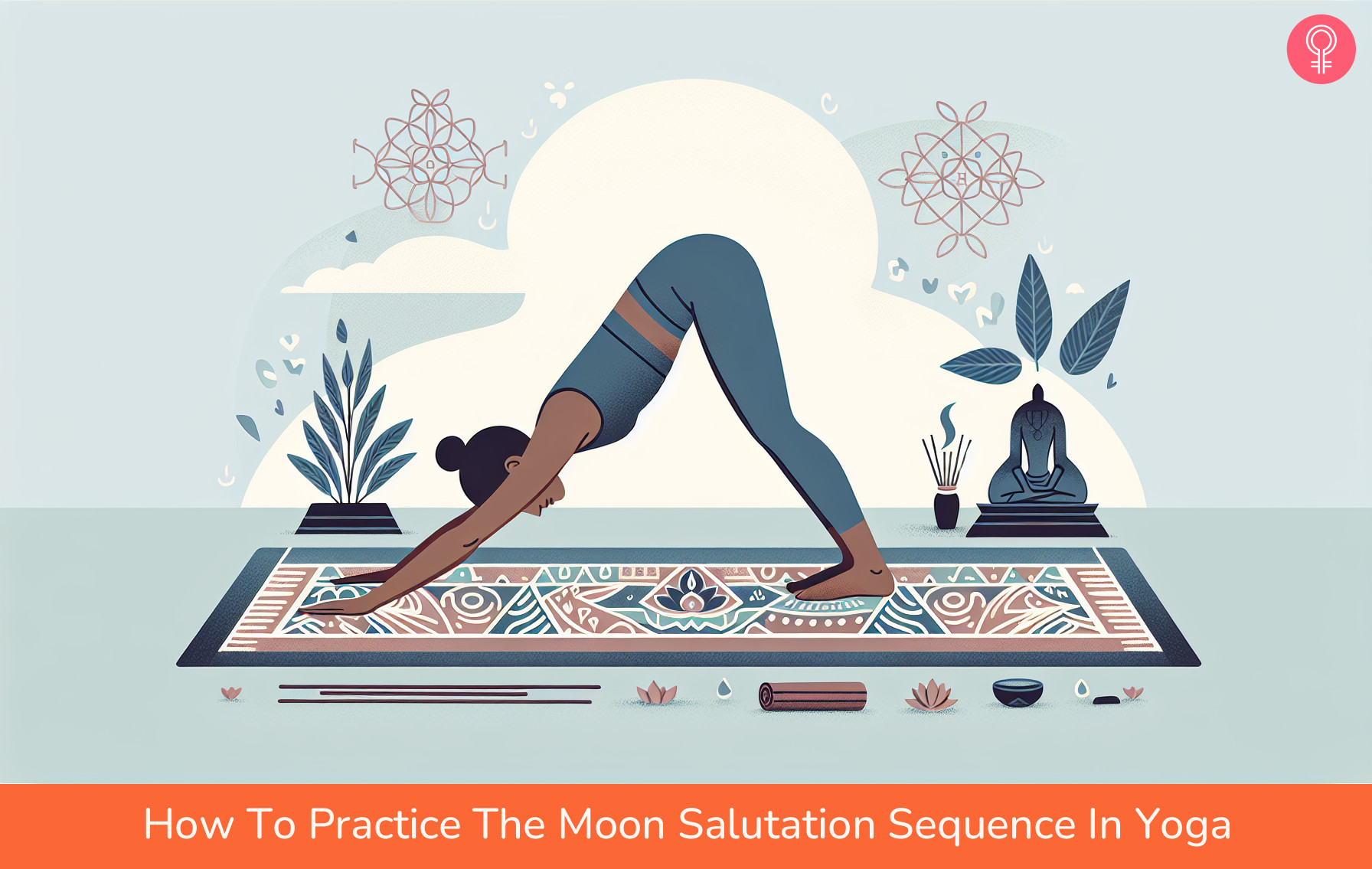
Image: Dall·E/StyleCraze Design Team
Embark on a transformative journey with the step-by-step guide to Chandra Namaskar, the Moon Salutation. Dive into the serene practice of this beautiful sequence and connect with the calming energy of the moon in this captivating video.





